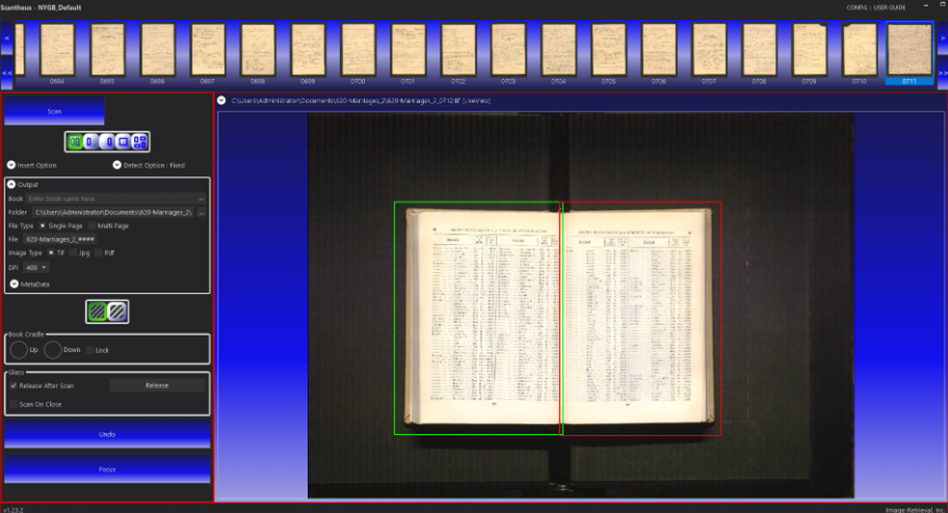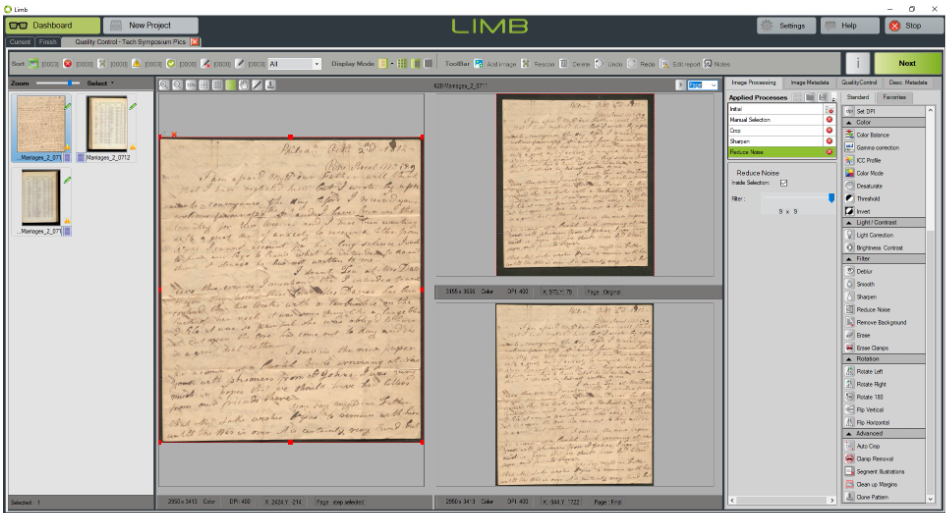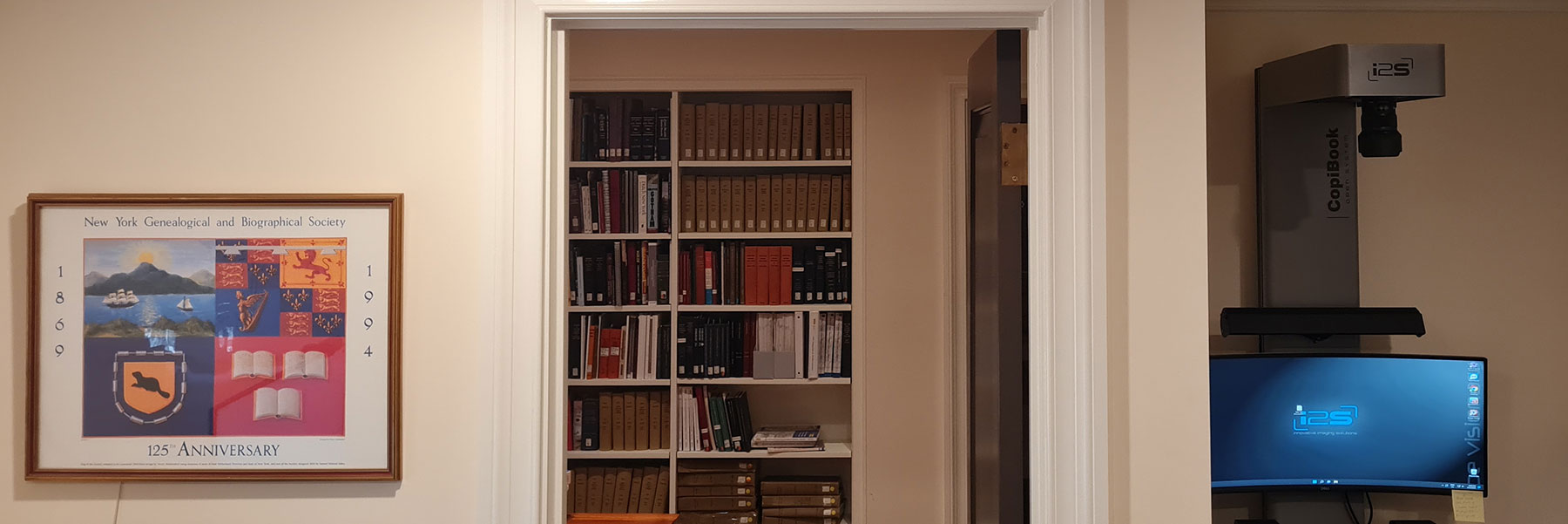Opened in 2021 thanks to generous donor support, our New York City Digitization Center is an essential workshop for scanning and digitally preserving our ever-growing collection of New York historical records. With a state-of-the-art camera and software that turns high res scans into searchable resources, we are furthering the work of genealogists, biographers, and historians alike.
Scanning
The engine driving so much of the Center’s output is the CopiBook OS A2 scanner. Considered the fastest book scanner in its class, our team now makes short work out of dense multi-volume texts, while still maintaining ultra sharp 400 dpi images.
There is, of course, a lot out there to scan, process, and index. The NYG&B library, an impressive physical collection of New York records, is just one digitization effort amongst many that we oversee. We also digitize for a number of genealogical, historical, and lineage societies, taking on all manner of historical documents, some dating to 17th century New York or earlier.

Processing

Once texts have been scanned, images need to be prepared for the digital environment. That’s where the LIMB Processing software comes in. With it we can easily alter the brightness, dimension, and framing of thousands of scans. There are also many built-in solutions to improve the legibility and presentation of older, more degraded texts.
Processing completed, we then upload the collections to the NYG&B's Online Records and Collections. Depending on the length of the materials, the quality of the machine-read scans, and how the documents were originally organized, we may need to add in our own indexing system. Such indexing efforts, carried out by a team of staff and volunteers, are often the final lift for a project and what ensures our published collections remains as user-friendly to researchers as possible.
Want to get involved in the NYC Digitization Center? Learn more.
